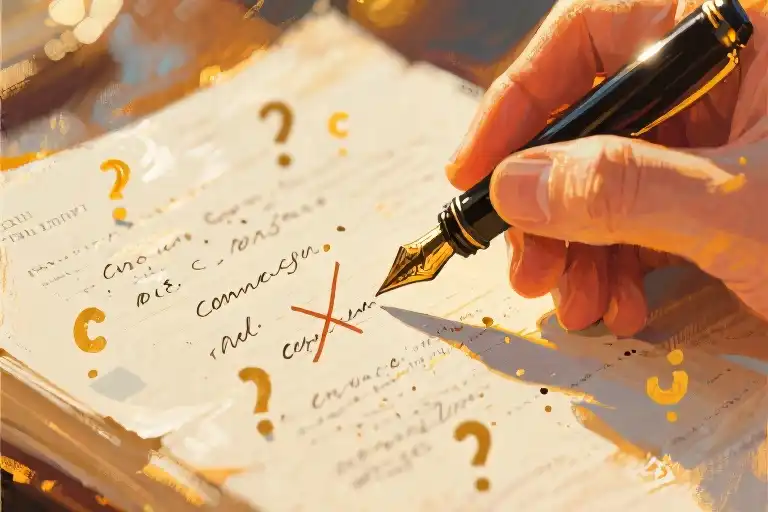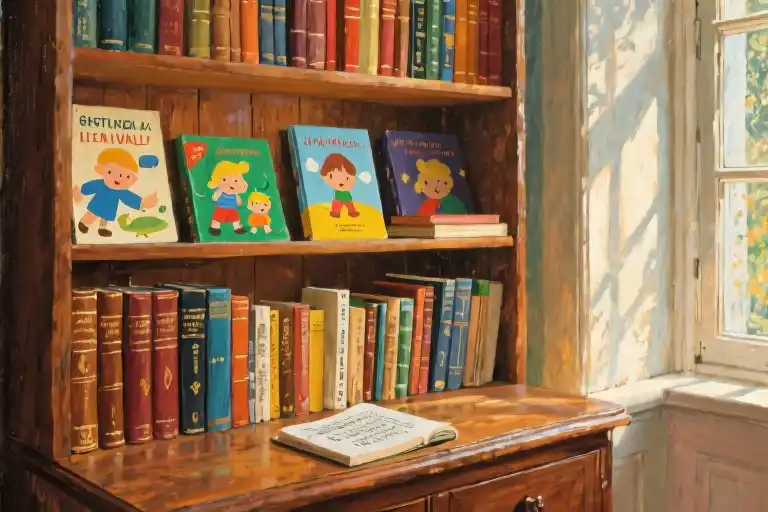There’s a particular loneliness that comes in the quiet hour after finishing a book that moved you deeply. You stare at the ceiling, still half-lost in its world, aching to tell someone about this profound connection you’ve discovered—yet simultaneously fearing no one could possibly understand. That underlined passage that felt written just for you? The minor character whose sorrow mirrored your own? These private resonances suddenly seem too fragile to expose to outside interpretation.
“I want to be a person like somebody else was once.”
Peter Handke’s enigmatic words hang in the air like smoke after a extinguished candle. In our hunger to share art we love, we’re not merely recommending a story—we’re offering fragments of our inner selves, hoping others will recognize the shapes. But what if the book that became your mirror only reflects someone else’s ordinary window?
This is the paradox of artistic communion: we believe we’re discussing the work itself, when in truth we’re always speaking through it—about our secret wounds, our unspoken questions, the parts of ourselves we’ve only learned to name through fictional characters. The harder we try to explain why Normal People made us weep or how Blade Runner 2049 articulated our existential dread, the more we confront an unsettling realization: perhaps no one will ever receive from this art exactly what we’ve received. Not because the work lacks power, but because every encounter with art is ultimately a conversation with oneself.
Consider the last time you pressed a beloved novel into a friend’s hands. Recall the nervous anticipation as they texted their progress (“Just reached Chapter 7!”), the subtle deflation when their eventual review landed somewhere between polite appreciation and benign confusion. That peculiar grief isn’t about differing tastes—it’s the shock of realizing your emotional blueprint doesn’t match theirs, that the story which carved valleys into your soul barely left fingerprints on theirs.
This phenomenon transcends simple preference. When we claim a book “understood” us, we’re describing a alchemical process where ink on paper somehow arranged itself into answers to questions we’d never voiced. The same text that becomes your lifeline might be another reader’s casual airport purchase because art doesn’t speak—it listens, then echoes back whatever silence we bring to it. Like holding a seashell to your ear and hearing not the ocean, but the shape of your own ear canal.
Which begs the uncomfortable question: in our urge to share these intimate artistic experiences, are we chasing genuine connection or simply seeking proof we’re not alone in our loneliness? The books we call “life-changing” often serve as Rorschach tests—their meaning emerging not from the author’s intent, but from the shadows our psyche casts upon them. No wonder the act of recommendation feels so vulnerable: we’re not really asking “Did you like it?” but “Did you see me in it?”
Yet herein lies the strange comfort. However imperfectly, art remains our most elegant attempt to bridge the unbridgeable gaps between subjective experiences. The very impossibility of perfect understanding becomes the reason we must keep sharing, keep writing, keep reaching across the dark with these flawed translations of our inner worlds. Because sometimes—not always, but breathtakingly often—someone whispers back: “I thought I was the only one who felt that way.”
When Recommendations Become Proof of Loneliness
You know that moment—when you finish a book that feels like it was written just for you, when the pages seem to pulse with your own heartbeat? Your fingers hover over your phone, drafting messages to three different friends: “You have to read this”, “This book is us”, “It explains everything I’ve never been able to say.” Then comes the wait. The read receipt appears. A typing bubble emerges… and disappears. Finally, a response: “Sounds cool!” with a heart emoji that feels more like a period than punctuation.
The Anatomy of a Failed Sharing
Take Norwegian Wood—a novel that splits readers like light through a prism. One person underlines passages about first love, texting favorite lines with pink-hued nostalgia. Another dog-ears pages about depression, seeing not a coming-of-age story but a manual for survival. When these two readers meet, they might as well be discussing different books entirely.
This phenomenon isn’t limited to literature. Recall recommending Eternal Sunshine of the Spotless Mind to someone who called it “a quirky rom-com,” while you sat clutching a pillow, gutted by its meditation on memory and loss. The film hadn’t changed; the lenses through which you viewed it had.
Why This Hurts
At its core, this isn’t about differing opinions—it’s about the startling realization that our most intimate artistic experiences resist translation. We don’t just want others to like what we like; we need them to feel what we felt. When they don’t, it creates a peculiar loneliness—as if the book/film/song was a secret language only you speak.
Psychology explains this through emotional projection (a term worth weaving in naturally). Like interpreting inkblots, we unconsciously shape art to fit our emotional contours. That passage you found profound? Someone else skimmed. That cinematic moment that left you breathless? Another viewer checked their watch. Neither response invalidates your experience—they simply prove art’s chameleon nature.
The Transition We Need
Here’s the pivot our hearts resist: Misunderstanding might be art’s mother tongue. Every “I didn’t get it” or “It was okay” isn’t a failure of connection—it’s evidence of art working as intended. The very ambiguity that allows The Great Gatsby to be both a jazz-age tragedy and a critique of the American Dream is what frustrates our desire for perfect sharing.
This realization stings at first, like learning a childhood secret wasn’t yours alone. But it contains an unexpected freedom—the permission to cherish your private resonance without needing external validation. After all, the books that change us most are often the ones we can least explain.
“But what if,” you wonder, staring at that underwhelming text reply, “the magic was never in being understood, but in the brave act of trying?” This question carries us gently toward our next exploration: how art functions as an echo chamber of self.
Art as an Echo Chamber of the Self
That moment when you press a beloved book into a friend’s hands with trembling anticipation – only to receive a polite nod weeks later, the kind reserved for lukewarm museum visits – cuts deeper than simple disappointment. It feels like a small betrayal, not by your friend, but by the very nature of artistic experience itself. Why does the story that shook your soul leave others unmoved? The uncomfortable truth whispers back: we never truly share art; we share ourselves through art.
The Rorschach Test Between Pages
Psychological research reveals our brains treat stories like intricate inkblots. In a Stanford study, participants reading the same Hemingway passage described completely different narratives – one saw masculine bravado, another detected vulnerable self-doubt. This phenomenon, called emotional projection, explains why your friend interprets Sally Rooney’s dialogues as romantic tension while you see existential paralysis. The words remain identical; the human lenses differ.
Roland Barthes’ revolutionary essay The Death of the Author takes this further. When artists release their work, he argues, they surrender control over its meaning. Like releasing paper boats down a river, the creator watches their intentions branch into countless tributaries of personal interpretation. That haunting line you underlined in The Bell Jar? The author may have intended it as satire while you received it as sacred truth.
Case Studies in Solitary Vision
Consider these real reader responses to iconic works:
- Normal People
- Reader A: “A perfect depiction of anxious attachment”
- Reader B: “A Marxist critique of class mobility”
- Blade Runner 2049
- Viewer X: “A warning about AI consciousness”
- Viewer Y: “A metaphor for my immigrant parents’ dissociation”
This divergence isn’t failure – it’s the miraculous function of art. Like sunlight through stained glass, the same beam fractures into unique color patterns depending on the viewer’s position. The cathedral doesn’t dictate which hue moves you most.
The Paradox of Longing for Shared Vision
Yet here lies our beautiful dilemma: if art is fundamentally a mirror, why do we ache for others to see their reflection in the same way? Why scribble “THIS!” in margins hoping someone will nod in recognition? Perhaps because in these moments of imagined alignment, we briefly escape what Handke called “the prison of singular consciousness.”
But what if we shifted perspective? Instead of grieving failed attempts to transfer our personal experience, we might celebrate art’s unique capacity to hold multitudes. That dog-eared copy of Mrs. Dalloway isn’t a failed telephone game; it’s a thousand distinct novels bound under one cover.
If the work is merely a blank canvas, why do we still crave parallel brushstrokes? The answer may hide in our next exploration – not in the sharing, but in the sacred act of witnessing our own reactions.
Misunderstanding as the Only Path to Understanding
There’s a peculiar loneliness that comes with realizing no two people read the same book. You might hand someone your most dog-eared, underlined copy of Norwegian Wood, watching their eyes trace the same sentences that made your breath catch—only to hear later: “It was fine, I guess.” The chasm between your trembling recognition and their polite indifference feels less like differing opinions and more like witnessing alternate realities.
This isn’t failure of taste or attention. It’s the inevitable result of language’s beautiful insufficiency. Wittgenstein compared words to worn coins—their meanings smoothed by endless handling until original impressions fade. When we attempt to describe why a novel’s rainy window scene shattered us, we’re essentially trying to explain a Chinese poem using only English cognates. The texture evaporates in translation.
Consider how Murakami’s famous metaphor—”Between a high, solid wall and an egg that breaks against it, I will always stand on the side of the egg”—morphs in different minds. For some, it’s political solidarity; for others, personal resilience; for you perhaps, the fragility of artistic creation itself. The words remain identical, but each reader stands in different shadows cast by that towering wall.
This linguistic limitation isn’t deficiency but design. Art communicates precisely by allowing misinterpretation. The spaces between an author’s intent, your personal resonance, and your friend’s tepid response aren’t empty—they’re fertile ground where meaning multiplies. Every “misread” becomes a new creation, like jazz musicians improvising over the same chord progression.
Three revelations emerge from this:
- All profound communication requires accepting distortion—your visceral reaction to Blade Runner 2049 will never perfectly transfer to another mind
- The gaps in understanding are where creativity lives—when your book club argues about To the Lighthouse, Woolf’s novel grows richer through contradiction
- Writing about art becomes translation rather than transmission—you’re not failing when others don’t “get it,” you’re composing variations on a theme
Perhaps true connection happens not when we finally understand each other, but when we stop expecting to. Like handing someone a kaleidoscope instead of a photograph—the shared object matters less than the unique patterns each viewer discovers through their private lens of experience.
Writing as Self-Translation
There are two ways to discuss Madame Bovary. The first goes like this: “Flaubert’s 1857 masterpiece critiques bourgeois romanticism through its meticulously crafted free indirect discourse, exposing the disconnect between Emma’s fantasies and provincial reality.” The second sounds more like: “That scene where she inhales the scent of arsenic while remembering ballroom waltzes—I once stood barefoot on a cold pharmacy floor, smelling disinfectant and dreaming of cities I’d never visited.”
The Pause That Defines Us
Great art doesn’t ask for analysis; it demands witness. Next time you read, keep a pencil nearby. Not for underlining profound passages, but to mark where your breath catches:
- That sentence you reread three times without knowing why
- The paragraph that makes your fingers tingle
- The dialogue where the margins fill with your own unspoken replies
These moments aren’t about the book—they’re about the silent conversation between the text and your unlived lives. Record them like a scientist documenting rare birds: “April 12: Page 203. ‘The light was different then.’ Sudden memory of childhood curtains billowing in a storm.”
Letters Never Sent
Here’s an experiment: Choose your most personal book—the one you’ve stopped recommending because no one ever felt it. Write it a letter that begins: “What you helped me understand about loneliness is…” Describe:
- The weather when you first read it
- The song you played on repeat afterward
- The passage you copied but never shared
Fold these pages into your edition like secret annotations for some future reader who might—just might—trace your fingerprints beneath theirs. Because writing about art isn’t about explaining; it’s the act of leaving breadcrumbs back to moments when we briefly understood ourselves.
“The books we love most are mirrors we dare not place in other people’s hands.”
From Judgment to Journey
Notice how traditional reviews measure books against external standards (“The pacing falters in Act 2”), while personal writing maps internal terrain (“This character’s grief echoed in my sternum”). Try translating a recent reading experience using only:
- Body sensations (tight throat, dilated pupils)
- Fragmented memories it triggered
- Objects you noticed differently afterward (how teacups looked more fragile)
This isn’t criticism; it’s alchemy—turning private resonance into language that honors its elusiveness. The goal isn’t to make others agree, but to say: “Here’s what happened inside me. Perhaps something similar lives in you.”
Your Turn: The Unshared Library
In the comments, share:
- One sentence from a book that felt written to you
- The reason you’ll never explain its significance
Let’s build a gallery of solitary reading moments—not to bridge the gaps between us, but to honor the sacred space they create.
The Library of Unshared Reflections
There’s a particular kind of loneliness that blooms in the space between the last page of a book and the first attempt to describe it to someone else. Borges once imagined paradise as a kind of library, but he never specified whether its visitors could hear each other’s whispers between the stacks. Perhaps true reading has always been this solitary communion – not just with the author, but with the stranger you become in the process.
The Cracks in Our Mirrors
That moment when you hesitantly recommend a novel that carved its initials into your ribs, only to watch it bounce harmlessly off someone else’s consciousness – it’s not merely disappointment, is it? It’s the quiet realization that the most intimate art experiences resist translation. The very passages that left you breathless now hang between you like inside jokes without their context, private symbols without a key.
Yet isn’t there something strangely beautiful about this failure? Like fingerprints on a windowpane, the smudges we leave on literature prove we were here, pressing against the glass of someone else’s imagination. The Japanese have a concept – kintsugi – where broken pottery is repaired with gold lacquer, making the fractures part of the object’s history. What if we treated our unsuccessful book recommendations the same way? Each awkward “I didn’t really get it” conversation becoming a golden seam in our reading lives.
Would You Still Share the Broken Mirror?
This is the question that lingers after all the psychology theories and philosophical musings: If we accept that perfect artistic understanding is impossible, what compels us to keep trying? Maybe it’s not about replicating our experience in another mind, but about the momentary alignment of two solitudes – like flashlights crossing in the dark. The value isn’t in the shared light, but in knowing others are out there with their own beams, searching.
Virginia Woolf wrote of books continuing each other, and perhaps readers do the same. Your unfinished interpretation might be the missing piece someone needs to make sense of their own encounter with the text. That dog-eared copy of Mrs. Dalloway you lent to a coworker – even if they see none of what you saw, their different vision doesn’t erase yours. The book expands to contain both readings, and countless others.
Your Turn at the Library Desk
We’d love to hear about the books that live in this private wing of your mental library – the ones you’ve stopped trying to explain because the attempt feels like describing a color that doesn’t exist in the listener’s spectrum. Share your most solitary reading moment in the comments, not to find identical experiences, but to marvel at how many unique ways a story can be alive.
And if you choose to keep some reflections forever unshared? That’s valid too. Some books are meant to be secret handshakes between you and your past self, or love letters to the person you’re becoming. As Borges might have said: In the infinite Library of Babel, there’s room for both the books we press into others’ hands, and those we keep pressed to our hearts.





